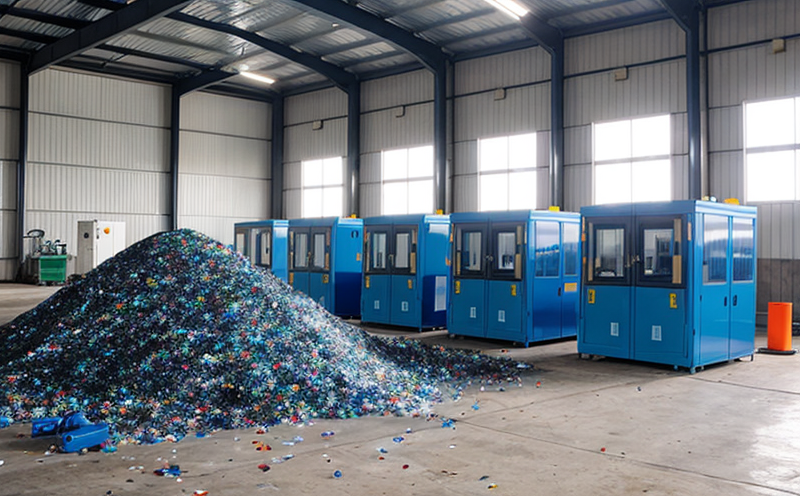ISO 13975 Recyclability of Plastic Packaging Materials
The ISO 13975 standard provides a framework to assess the recyclability of plastic packaging materials. This evaluation is critical for manufacturers, waste management companies, and regulators aiming to enhance recycling processes and reduce environmental impact. The test protocol in this standard ensures that packaging meets specific criteria related to mechanical properties, chemical resistance, and compatibility with existing recycling streams.
The process begins by selecting the appropriate plastic material types that are intended for assessment under ISO 13975. These include polyethylene (PE), polypropylene (PP), polystyrene (PS), and various combinations thereof. Specimens must be prepared according to strict guidelines, ensuring consistency across samples.
The first step involves mechanical testing to determine the tensile strength and elongation at break of the plastic specimens. This data is crucial for understanding how these materials will behave during recycling processes like shredding or extrusion. Following mechanical testing, chemical resistance tests are conducted using solvents commonly found in industrial recycling environments.
Compatibility with existing recycling streams is assessed through compatibility tests, which evaluate whether the new material can be processed alongside existing polymers without degradation. Compatibility issues often arise due to differences in melting points and molecular structures between various plastic types.
The ISO 13975 standard also emphasizes the importance of post-consumer waste (PCW) content verification. This involves quantifying the percentage of PCW incorporated into the final product, which helps ensure that recycled materials contribute effectively towards sustainability goals.
Compliance with this standard not only enhances recyclability but also supports broader environmental initiatives by promoting circular economy principles. By ensuring that plastic packaging can be efficiently recovered and reused, we reduce reliance on virgin raw materials and minimize landfill contributions from non-recyclable waste products.
- Environmental Impact: Reduces the need for new resource extraction.
- Economic Benefits: Decreases production costs associated with virgin materials.
- Social Responsibility: Encourages sustainable practices among consumers and businesses alike.
In conclusion, adherence to ISO 13975 is essential for any organization involved in plastic packaging design or manufacturing. It provides a robust methodology for evaluating recyclability, thereby fostering innovation within the industry towards more sustainable solutions.
Why It Matters
The importance of assessing recyclability through ISO 13975 cannot be overstated. As global demand for plastic packaging continues to grow, so too does the associated environmental footprint. Properly designed and tested plastics are key components in achieving sustainable waste management practices.
By ensuring that plastics meet rigorous standards like those outlined in ISO 13975, manufacturers can contribute significantly towards reducing greenhouse gas emissions. Additionally, compliance with these regulations helps prevent contamination within recycling streams, thus improving overall efficiency of the process.
Furthermore, implementing this standard encourages collaboration between various stakeholders including producers, consumers, and governments. Together they work toward creating a circular economy where waste is minimized and resources are reused effectively. This collaborative approach fosters innovation across sectors, leading to better product designs that are inherently more recyclable.
In summary, ISO 13975 plays a vital role in promoting responsible use of plastic packaging materials. It serves as both a benchmark for quality assurance and an enabler of sustainable development goals globally.
Industry Applications
The application of ISO 13975 extends beyond mere compliance; it offers valuable insights into the practical aspects of plastic recycling. For instance, in the automotive industry, where lightweighting is crucial for fuel efficiency improvements, understanding recyclability becomes paramount when selecting appropriate materials.
In consumer electronics manufacturing, minimizing waste generation through improved design facilitates easier end-of-life disposal options for consumers while simultaneously reducing pressure on natural resources.
For household appliance producers, ensuring compatibility between old and new components ensures seamless integration during upgrades or repairs without compromising functionality. Lastly, in construction applications where long-lasting infrastructure projects require durable materials that do not degrade over time, ISO 13975 provides a reliable means to select suitable candidates for use.
Overall, industry-wide adoption of this standard promotes a culture of responsible consumption and production practices across diverse sectors.
Environmental and Sustainability Contributions
- Reduction in Landfill Waste: By facilitating proper recycling processes, ISO 13975 helps divert waste from landfills.
- Saving Natural Resources: Encourages the use of recycled content instead of virgin materials.
- Lower Carbon Footprint: Minimizes energy consumption required for manufacturing new products.
- Increased Efficiency in Recycling Streams: Ensures only compatible plastics enter recycling streams, enhancing overall performance.
The implementation of ISO 13975 contributes significantly to reducing the environmental burden associated with plastic waste. It supports sustainable development objectives by promoting resource efficiency and circular economy practices.





